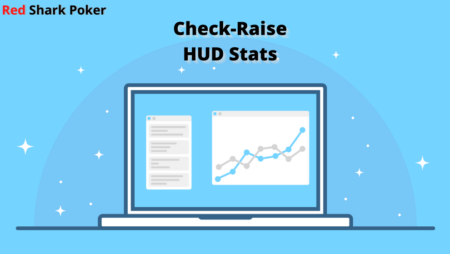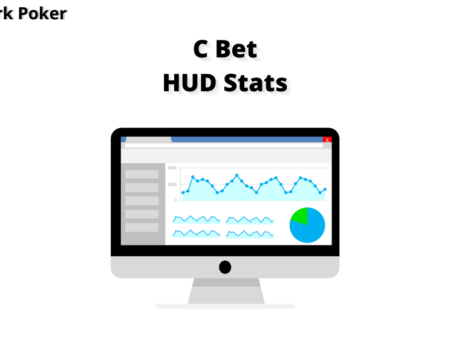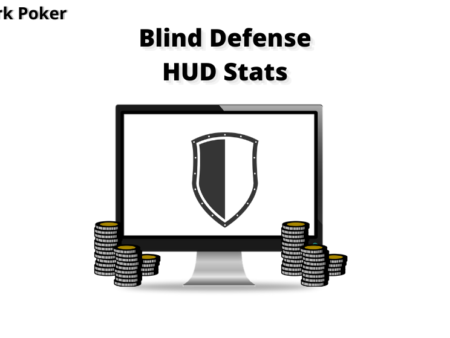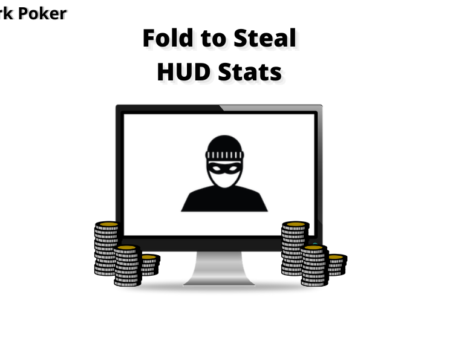

This article is for those players who are using HUD software or planning to use one. If you are a novice player, continue reading to find out how Check Raise HUD stats help you to play against your opponent’s check-raise moves.
What is a Check-Raise?
Check-raise is a tricky out of position play where you check when the action gets to you and raise when your opponent bets. So, you are checking first and then raising after your opponent bets. Thus, this play is called “check-raise” in poker. To simply put, this play involves three steps:
- You check first
- Your opponent bets
- You raise
Check raise is a very deceptive move, which can be used for both value betting and bluffing. You allow your opponent to bet first and then extract more money by raising with the best hand. You can also bluff and confuse your opponent with this move to win the pot.
If you don’t know how to check-raise, read this: How to Check-Raise in Poker?
Check-Raise HUD Stats for Bluffing
If you are planning on bluffing with a check-raise, look out for the following stats in your HUD software. These stats will tell you the percentage at which your opponent folds to a check-raise on every post-flop street.
- Fold to Flop Check-Raise%
- Fold to Turn Check-Raise%
- Fold to River Check-Raise%
Good Check Raise HUD Stats
On the other hand, when you face a check-raise from an opponent, you can check the check raise HUD stats to decide whether your opponent is bluffing or value betting. If your opponent is a habitual check-raiser, you can give him less credit for the move. And, if your opponent check-raises rarely, you can take his check-raise seriously.
You need data of at least 1000 hands to get an accurate read on your opponent’s check-raise behaviour. The average check-raise HUD stats are anything between 4% and 8%.
- Less than 4% – The player rarely check-raises, and you should take his check-raise seriously
- More than 8% – The player check-raises too often, and you can consider calling or re-raising
How to Use Check-Raise HUD Stats?
Check-raise is a tricky out-of-position move that confuses your opponent. Your opponent can be value betting to get more value or bluffing to make you fold. Let’s look at some of the examples where you can use the check-raise HUD stats to make the right decisions.
Facing a Check-Raise
You are on the button with J♠ 9♠, and the MP opens to 3X BB. You decide to call, and everyone else folds.
Flop: K♠ 2♥ 9♦
MP checks and you bet half the pot with the middle pair. However, MP check-raises thrice the size of your bet. Let’s look at the HUD stats of two different types of opponents against whom you face a check-raise in the same situation.
Player A: VPIP 38/ PFR 30/ Check-Raise 10
VPIP and PFR suggest that the opponent is a LAG who mostly enters the pot with a raise. He has a high check-raise of 10. We can infer that he is a habitual check-raiser and could be check-raising with air. We have a middle pair that gives us 5 outs to improve our hand to Two pair or trips. Also, we have a backdoor straight. So, we should call here.
Player B: VPIP 12/ PFR 5/ Check-Raise 3
VPIP and PFR suggest that the opponent is a NIT who is probably opening with a strong range. A King is definitely in his range. As he rarely check-raises, it is possible that he is value betting with AK, KK, KQ, KJ, KT, etc. We should give credit to his check-raise. As he has raised thrice the size of your bet, we have tough pot odds to continue. So, we should fold here.
To Bet or Not to Bet?
You are on the Button with 6♠ 7♠, and the MP opens to 3X BB. You decide to call, and everyone else folds.
Flop: A♠ 8♥ 9♦
MP checks. You have a chance to semi-bluff here with your open-ended straight draw. However, you need to look at the check-raise stats of your opponent before betting. If you bet, will you allow your opponent to check-raise? Let’s look at the HUD stats of two different types of opponents against whom you face a check-raise in the same situation.
Player A: VPIP 40/ PFR 31/ Check-Raise 12
VPIP and PFR suggest that the opponent is a LAG with a very high check-raise of 12. If you bet after your opponent has checked, he is more likely to check-raise and give you incorrect pot odds to chase your draws. Instead, you can outplay your opponent by just checking and seeing a free card.
Player B: VPIP 24/ PFR 12/ Check-Raise 2
VPIP and PFR suggest that the opponent is a TAG who has very low check-raise HUD stats. You have the chance to semi-bluff as your opponent has checked on the flop. He may be holding a King, Queen, Jack, suited connectors or medium pocket pairs. If you make a half to 3/4 pot bet, your opponent will most likely fold. In case your opponent calls, you still have 8 outs to complete your straight.
Conclusion
As you have seen, the check-raise HUD stats can help you to make the right decisions when facing a check-raise. The HUD stats can help you to identify a habitual check-raiser and catch his bluffs. Also, you can use your position and check the HUD stats to deny the chance to your opponent to check-raise. If your opponent check-raises too often, you can simply check behind to deny him the opportunity to use this tricky move.




